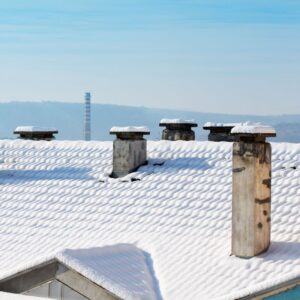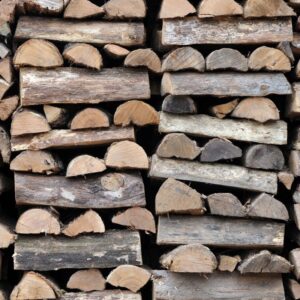Winter brings with it long, dark nights and chilly – often inclement – weather. But if you have a well-functioning fireplace or two at the heart of your home? Well, then the cold and dark don’t feel like such a problem. Instead, they’re occasions for pleasant evenings passed besides a cheery fire.
What you need to know is simply how to make the most out of this fabulous home feature – and we’ve got tips for Indianapolis homeowners. Need to schedule a service? Call or book online now.
Are Wintertime Chimney & Fireplace Repairs Possible?
 A big winter concern some homeowners have is whether fireplace repair needs can be addressed in the cold of winter.
A big winter concern some homeowners have is whether fireplace repair needs can be addressed in the cold of winter.
There are definitely reasons professional chimney technicians advise repairs in the more moderate months… Warmer temperatures tend to be best for making masonry repairs and curing mortar.
Yet, if you have a concern related to your fireplace or wood stove, such as strange odors, a structural issue, or smoking backing up into your living space, don’t procrastinate in reaching out – let us put our expertise to work for you. We’ll help you find the best solution to your fireplace and chimney needs in any season.
How To Maximize Fireplace Performance & Efficiency
- Chimney Inspections. Having a certified pro provide an annual inspection and sweep of your fireplace system gives you a leg up on safety and helps preserve your investment in your home. How? It gives us the opportunity to tackle any issues before they become more substantial (and costly) problems. It also gives insight as to whether your system is operating efficiently and safely, helping ensure the best use of your fireplace for seasons to come.
- Good Ventilation. Be sure your damper is open when starting a fire – and closed/sealed when your fireplace is not in use. Also, make sure your chimney is swept regularly to clear out blockages that could impede ventilation. A smoky living room definitely does not translate to cozy winter charm!
- Quality Firewood. When newly cut, firewood contains a lot of moisture. In order to burn well, it needs to be seasoned – dried over time until visible cracking is evident and the logs sound hollow when struck together. If firewood isn’t seasoned, combustion will be incomplete, meaning a sputtering, smoky fire that’s difficult to start and sustain. Incomplete combustion also contributes to the build up of creosote in your chimney flue, which decreases efficiency and leads to chimney fires.
- Fireplace Screens & Doors. Fireplace screens and doors protect against stray sparks or embers escaping the firebox. Glass doors also help retain and radiate heat through the room, maximizing home heating and efficiency.
- Fireplace Upgrade. If you have a traditional open hearth, having a fireplace insert installed can give you precision control over the heating process without costing you the flicker and glow of a beautifully contained flame. Inserts are known for their efficiency, and also provide the opportunity for a fuel-type conversion.
 Proper Firewood Storage. Since good firewood is important, proper storage of said wood is essential. This may require special diligence in the wetter months. Firewood should be stored off the ground and covered with a tarp or roof, as this helps shield firewood from moisture. Don’t wrap it up too tight, however! Allowing good air circulation on the exposed surfaces of your firewood will help it dry quicker and maintain a low moisture content.
Proper Firewood Storage. Since good firewood is important, proper storage of said wood is essential. This may require special diligence in the wetter months. Firewood should be stored off the ground and covered with a tarp or roof, as this helps shield firewood from moisture. Don’t wrap it up too tight, however! Allowing good air circulation on the exposed surfaces of your firewood will help it dry quicker and maintain a low moisture content.- Proper Fire Building. When stacking wood in your firebox, allow space between logs for air circulation. Many experts suggest that arranging your largest logs at the bottom, then adding the smaller logs in a criss-crossing pattern on top is a great strategy. By placing kindling on top, you warm the flue and falling embers can slowly light larger logs for a sustained fire.
Avoiding the Freeze/Thaw Cycle
What exactly is the freeze/thaw cycle? When moisture penetrates masonry, it can cause substantial damage. This is amplified in winter when water in cracks or pores can freeze. When it freezes, it expands, aggravating cracking. Repeated cycles of thawing and freezing can exacerbate the damage done, eventually culminating in substantial structural damage that can affect the fireplace’s overall functionality and stability.
So, it’s clear that avoiding water-related damages is a must… How is this done?
Ensuring that all chimney components are well fitting and properly installed – including your chimney cap, which acts as a barrier against rain, snow, critters, and debris. Also, inquire about having your chimney waterproofed in the warmer months to protect your masonry from decay.
Your chimney professional will be attuned to signs of weather damage at your annual inspection, and advise steps to address any damage that exists.
Give Us a Call
Incorporating solid fireplace or wood stove practices and being proactive about maintenance will help ensure the longevity of one of your homes most charming and enjoyable features. Regular inspections and sweepings, proper firewood use and storage, and prompt repairs all minimize hazards and help to keep your hearth appliance serving you all season long.
Need to schedule a service? Call or reach out online now!
